
Overview of the ebook “The Ultimate Guide to Route 66”
A trip to Route 66 is a driving adventure along what is probably the most famous road in the world. Historic Route 66 stretches more than 3,900 miles and passes through 8 states, beginning in Chicago, Illinois, and ending on the Pacific Coast in Santa Monica, California. Designated “66” in 1926, it became a busy route , bringing people from all walks of life together.
John Steinbeck would call Route 66 "the Mother Road" for those trying to escape the Dust Bowl and the ravages of the Great Depression in the 1930s. countless vacationing Midwestern families can visit the Grand Canyon or Disneyland. As more Americans took to the highway, a road culture would spring up all along Route 66— motels , gas stations , tourist attractions —to meet the needs of an increasingly mobile population .
Today, it is this classic road culture and the allure of the open road that continues to attract tourists. Route 66 has inspired songs , movies , TV shows , books and even a clothing brand. Even though Route 66 was officially decommissioned in 1985, people from all over the world come to drive this legendary route, stay in vintage motels, see strange roadside attractions, and eat American food. For some travelers, it's a trip back in time to revisit a route they've already taken on a family vacation, while for others, a trip down Route 66 is the ultimate symbol of travel. 'Americana.
We'll share information on how to plan your own Route 66 trip, decide when and where to go, and share tips for your Route 66 trip.
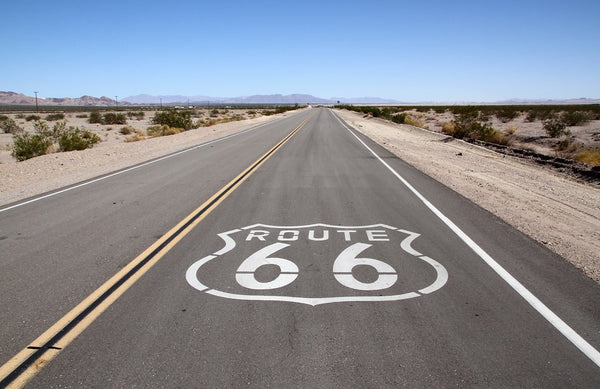
Basic information about Route 66
What is Route 66?
First section covers the basics of Route 66 , including the history of the Route, its length, its current condition, starting and ending points, and the main things you can see and do along the Route 66.
Route 66 is a historic highway in the United States that ran from Chicago (Illinois) to Santa Monica (California) in a southwest direction, crossing 8 states and covering more than 3,900 km . From east to west, it passes through parts of Illinois, Missouri, Kansas, Oklahoma, Texas, New Mexico, Arizona and California.
Over the years, Route 66 was continually improved, repaved, changed and rerouted, so that there is not just one "Route 66" but several routes . For example, an early route of Route 66 in New Mexico passed through Santa Fe, but in 1937 Route 66 was rerouted to bypass the state capital, so today's travelers can choose the route of Route 66 that they wish to follow at these locations.
The road is no longer officially designated or signed as Route 66 ( as it was decommissioned in 1985 ); however, more than 80% of this original route can still be traveled today with the help of Route 66 guides and maps. Route 66 has become one of America's first landmarks and tourists drive it today today for its history, its places and its nostalgia.
Note that most US states have a Route 66 or Highway 66; however, "famous" Route 66 only refers to this historic route that ran from the Midwest to California.
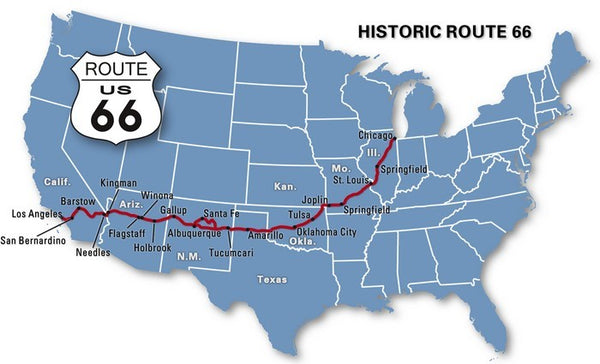
The history of Route 66 spans nearly 100 years , but here's a brief overview. In 1926, the U.S. Federal Highway System assigned the number 66 to the route from Chicago to Santa Monica . The route was simply a series of pre-existing routes and the designation "Route 66" was intended to ensure adequate and consistent marking and signage for the route as it crossed state and regional borders. The road would be fully paved in 1938 , and Route 66 would become the busiest route between the Midwest and the West Coast.
Over the years, it was walked by those participating in the Bunion Derby, driven in desperation by Dust Bowl migrants heading to California for a better life, hitchhiked by World War II soldiers, and used by thousands and thousands of Americans vacationing in the 1950s and 1960s to visit wonders like the Grand Canyon and Disneyland .
Along this busy road are motels , restaurants , gas stations , auto repair shops, and all manner of tourist traps that are part of a distinctive road culture that reached its peak in the 1990s. 1950s and 1960s. Along this route, one could pay to see live rattlesnakes, visit Indian reservations, ride horses, see a Wild West show, and marvel at statues of giant dinosaurs.
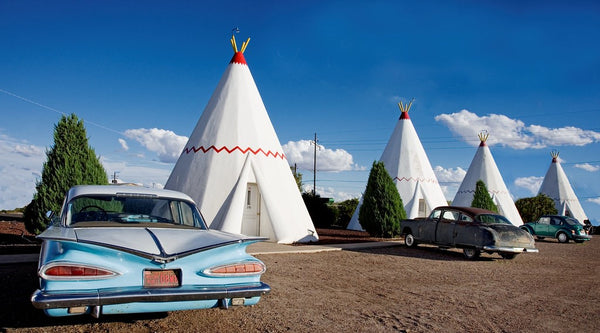
The Wigwam Motel
In 1985, Route 66 was officially decommissioned as a highway and road signs were removed. Today, a number of advocacy, tourism, and preservation groups seek to protect the history, remaining pavement, and local businesses located along this historic route. Efforts by advocacy groups, government funding and representation in films, such as Cars, have helped increase tourism along the route.
However, despite these efforts, the World Monuments Fund added Route 66 to its watch list of endangered sites in 2008. Travelers currently using Route 66 should consider how being good customers to Existing small businesses along the route can help support them for future visitors .
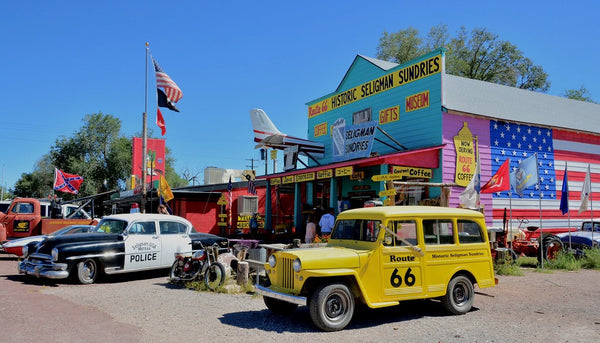
Seligman
Where does Route 66 start?
Route 66 begins in Chicago, Illinois . In Chicago, the official start and end points for Route 66 are a bit confusing because they have changed over time and there are now one-way east and westbound lanes, making the situation even more delicate.
For those traveling from Chicago, you can start on Jackson Boulevard at Michigan Avenue (the original starting point in 1926) or Jackson Blvd at Lake Shore Drive (the official starting point since 1933) . These two points are only a few blocks apart.
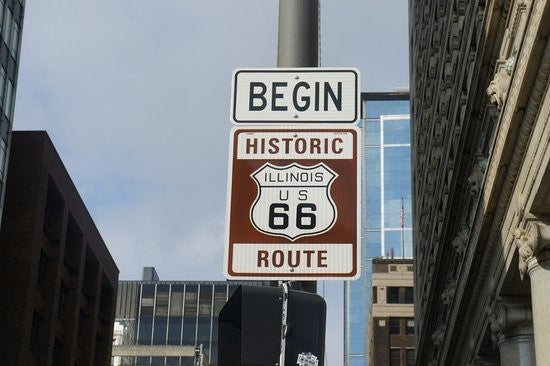
Start of Route 66 in Chicago, Illinois
However, the current Route 66 start sign (as of last count) is located on E. Adams Street at Michigan Avenue , so you can stop and walk there before leaving. For motorists traveling east and ending in Chicago, the Route 66 end sign is located at the intersection of Jackson Blvd and Michigan Avenue.
To take a photo of any of the end of Route 66 signs, you'll need to find a place to park and walk up to them if you can. The signs are placed on tall posts (one next to a bus stop) to prevent vandalism/theft, but this makes it harder to take photos next to these signs!
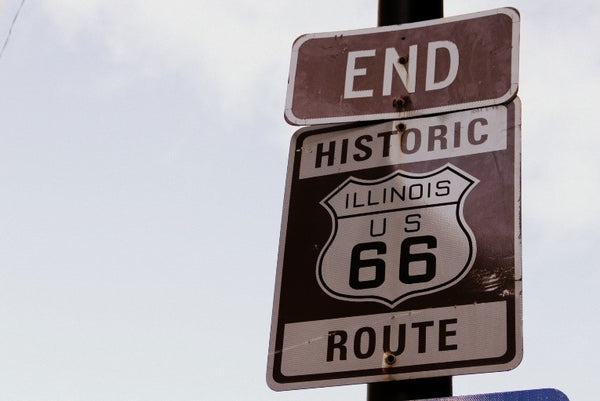
Where does Route 66 end?
The route ends in Santa Monica, California . Although some say Los Angeles, California for simplicity's sake since Los Angeles is a more well-known city.
Like the starting point, you have more than one official ending point. The original 1926 terminus was at the intersection of 7th Street and Broadway in downtown Los Angeles. It was later moved to the intersection of Lincoln Boulevard and Olympic Boulevard in Santa Monica.
Olympic Boulevard is now divided by Interstate 10. For eastbound traffic, there is a Chevron gas station located at the intersection of Olympic and Lincoln (no signs). But for westbound traffic, there is a brown Route 66 start and end sign located at the intersection in front of Mel's Drive-In (1670 Lincoln Blvd). Mel's opened in 2018. It's a modern, retro-style restaurant and a great place to stop for a bite to eat .
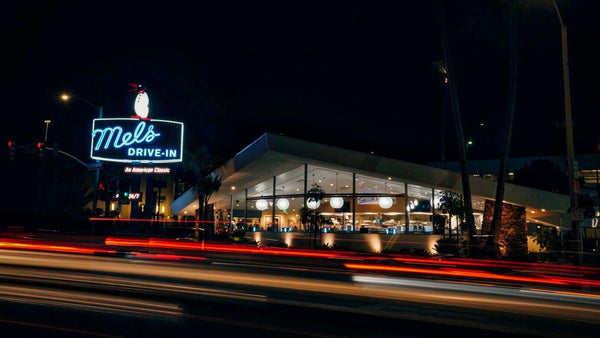
For a more satisfying end (or start) to your Route 66 trip, head a little further to the Santa Monica Pier, the entrance is located on the corner of Colorado and Ocean Avenue. Next, walk to the 66 to Cali store where you'll find the Route 66 "End of the Trail" sign as well as a fun Route 66 gift shop kiosk.
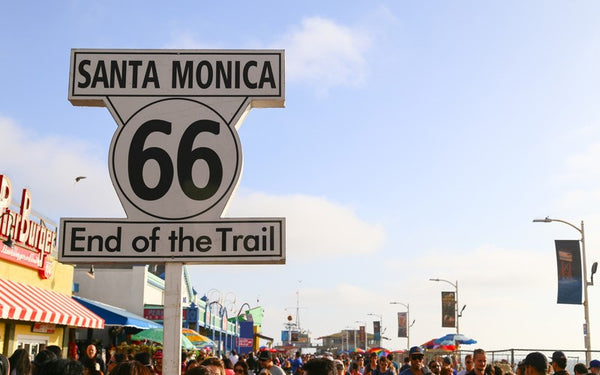
Which states does Route 66 pass through?
Route 66 crosses 8 different states in the United States. From east to west, it passes through Illinois , Missouri , Kansas , Oklahoma , Texas , New Mexico , Arizona and California .
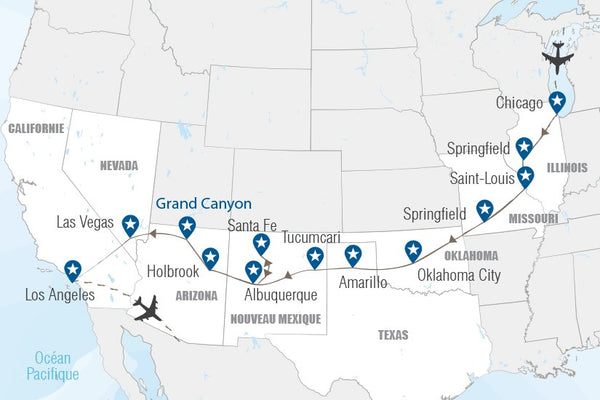
What can I see along Route 66?
Route 66 spans 8 states, so you'll pass through expanses of desert , mountains , farmland, large metropolitan cities, and small towns. You'll pass a wide variety of viewpoints, landscapes, parks, waterways, and cultural attractions along the way.
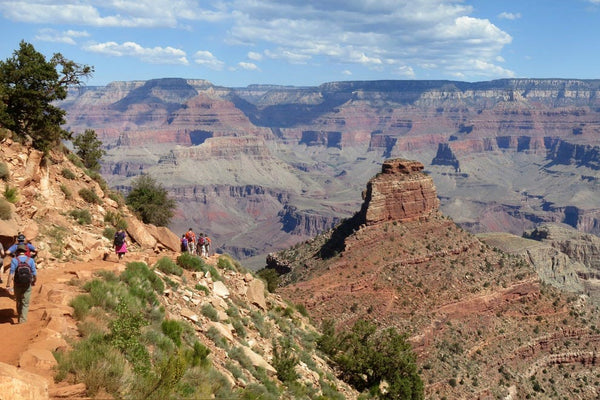
Towns are certainly important stops on a Route 66 route, but it's in the smaller towns , often along their main streets, that you'll find the businesses and people who fit the image that many people have small-town America.

In many cities, you shouldn't expect to stroll down its Main Street, eat at its restaurant, and visit an old steam engine. A trip on Route 66 may not be full of must-see sights, but the journey itself is the experience . Route 66 was developed to allow people to get from point A to point B, but today Route 66 is often the destination itself.
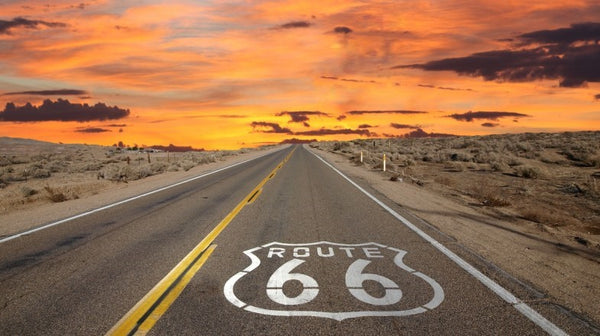
The buildings and signage of the many cafes , motels , gas stations , and tourist attractions along the route are some of the most iconic features to see. Many of the original businesses are no longer operational, but in many places you can still eat in the same restaurant, sleep in the same parking lot, and take a guided tour of the same cave as those who took Route 66 in the 1950s.
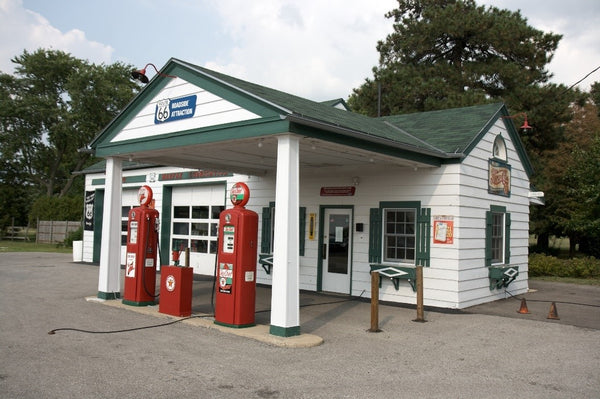
Spending time in the car, eating a burger and ice cream at a classic restaurant , visiting a classic and fun tourist attraction , and sleeping in a simple but clean family motel are the hallmarks of a Route 66 trip.

Unfortunately, many of the businesses that sprung up to support Route 66 traffic are long gone , leaving behind crumbling buildings, dark neon signs, crumbling motels, and even isolated ghost towns that are what they are. -themselves become remarkable attractions. Natural wonders such as the Mojave Desert, the Painted Desert, the Petrified Forest, the Meramec Caverns and the mighty Mississippi River are found along this route, and detours can take you to many other natural wonders such as the Grand Canyon .
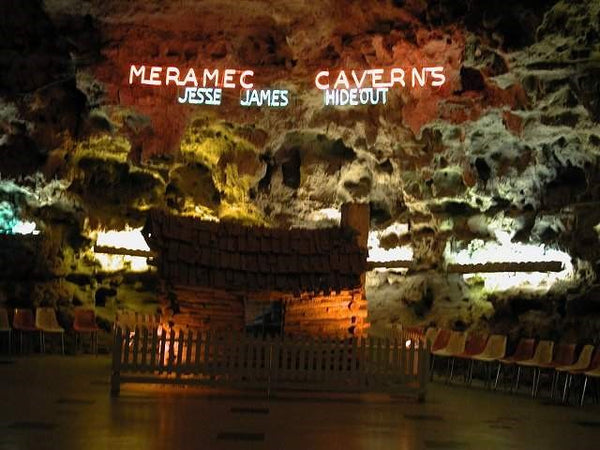
Other popular attractions include classic cars , old bridges , quirky roadside statues and art installations, restored old gas stations , outdoor cinemas , murals , shows and attractions of the Old West, Old Town theaters and historic railroad attractions.
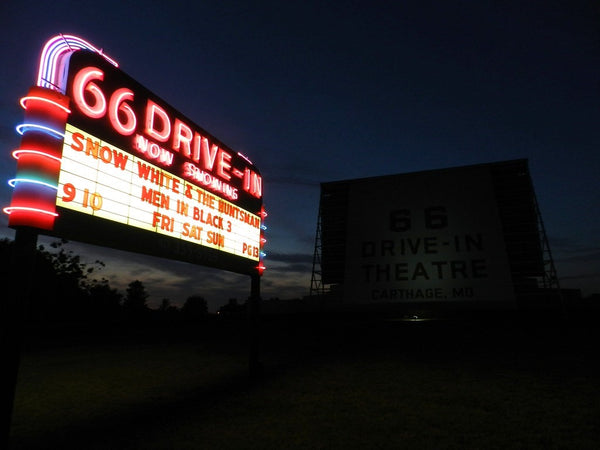
The giant statues include a giant blue whale, dinosaurs, a soda bottle, giant cowboys, a large cross, the famous Muffler men, the world's largest concrete totem pole, and the world's largest rocking chair . There are also a number of Route 66 museums (most states have at least one) and other specialty museums along the route (which focus on everything from barbed wire to Jesse James to the way by cowboys and motorcycles).
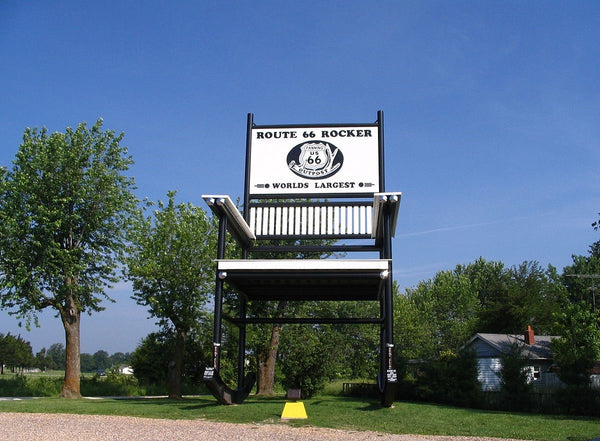
Of course, it's up to you to plan your trip the way you want, and you can also take diversions and detours from Route 66 to visit other attractions off the route that suit your interests, whether whether listening to country music in Branson, Missouri, searching for aliens in Roswell , NM, admiring the Grand Canyon in Arizona, gambling in Las Vegas, or visiting Disneyland > in Anaheim, CA.
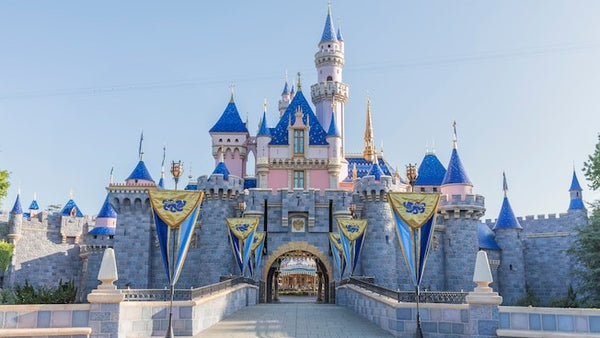
To be continued in the full ebook:
- Tips for planning your route on Route 66
- What to take with you for a peaceful trip
- The best places to visit
- The best elements to immerse yourself in the “Route 66” atmosphere!
- The best time of year to visit Route 66
- And many other surprises!










Leave a comment